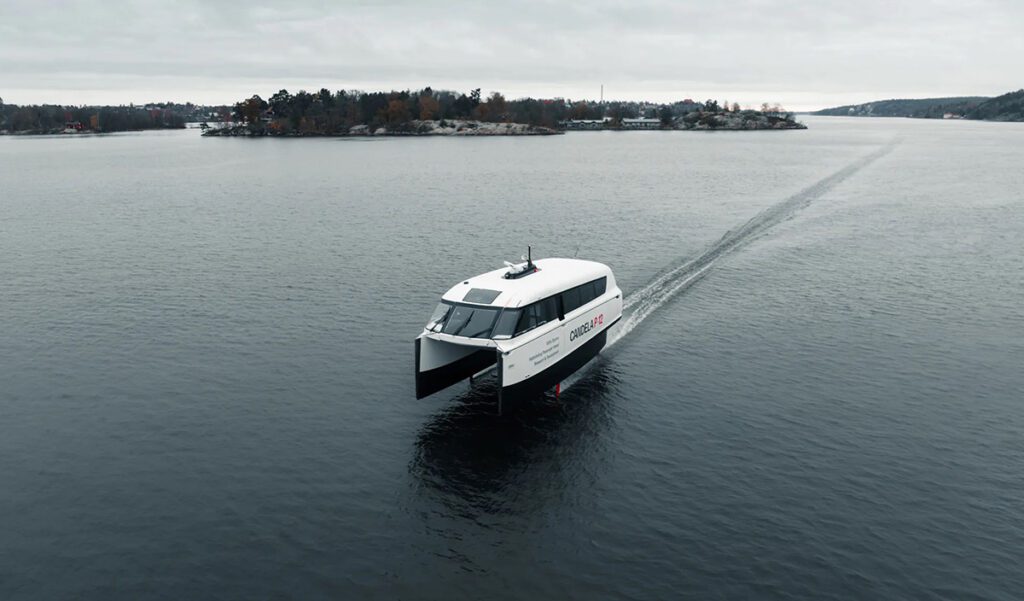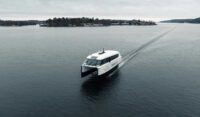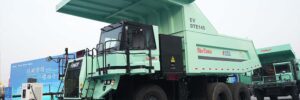Commuters as well as travelers who are planning to explore the northwestern shores of Saudi Arabia will have a new and green way of getting around starting in 2025.
The operators of Neom, the massive faux-sustainable development that Mohammed bin Salman Al Saud, the crown prince and authoritarian leader of Saudi Arabia, is creating in Tabuk, have ordered a fleet of eight Candela P-12 100% electric hydrofoil ferries to speed up journeys and enable more frequent departures than traditional ferry boats could offer.
The P-12, which seats up to 30 passengers, is 39’ 4.1” (11.99 m) in length with a 14-foot, 8.4-inch (4.5 m) beam. It displaces 11.02 tons (10 metric tonnes); the builders did not indicate the vessel’s draught.


The ferry can be operated by a single crewmember and is driven by two proprietary podded thrusters powered by four 63 kWh batteries. The P-12 has a range of 40 nautical miles at 25 knots (almost 29 mph or 46 km/h) service speed.
A lifecycle analysis performed at the Kungliga Tekniska högskolan, or the KTH Royal Institute of Technology, in Stockholm titled “Electric Hydrofoil Boats Beat Diesel Boats for Climate Sustainability” suggests that a Candela P-12 will emit 97.5% less CO2 during its lifetime compared to a conventional diesel vessel of the same size.
“We’re proud to provide a vessel system designed with both passengers and the environment in mind,” said Candela CEO Gustav Hasselskog. “Short waiting times, quick connections, and a very enjoyable experience without taxing the environment with wakes, emissions and noise will revolutionize how we travel on water.”
Throughout the region, “All daily necessities and services will be just a short boat commute away,” Candela said.
The Candela P-12 is currently the fastest electric passenger vessel available, with a cruising speed of 25 knots enabled by its computer-guided hydrofoil system. It also has the longest range at two hours of operation.
The ship achieves this efficiency in part by flying above the waves on underwater wings called hydrofoils. As a result, it uses 80% less energy than conventional ships.
Source: Candela











